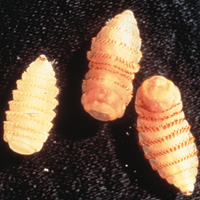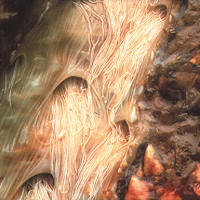INTERNAL PARASITES
Bots
The larvae of the bot fly are known as bots. Being an insect, rather than a worm, they have a more complex body structure, and their development includes three or more larval moults followed by development into a pupa before being passed out in faeces and then emerging as the adult fly.
Hairworm
Intestinal Threadworm
These are generally only a problem in foals as horses develop a natural immunity at around 6 months of age. Larvae are passed to the foal through the mare's milk, and minimizing infection can be achieved by treating the mare for this parasite, particularly before foaling. However, foals can also pick the larvae up from the pasture themselves. The life cycle is only a few weeks long meaning a heavy worm burden can be acquired very quickly.
Large Redworm
The large redworm is not as problematic as it used to be due to the use of modern equine anthelmintics. However, these are still life-threatening parasites whose migratory larval stage can cause blockages in blood vessels, damaging vital organs.
Large Roundworm
Mainly found in foals and young horses, as horses develop natural immunity to this parasite by about 18 months of age.
Lungworm
Lungworm are primarily found in donkeys. Horses are typically only infected if grazed alongside donkeys, and infections in horses rarely result in the development of egg producing adults.
Neck Threadworm
Neck threadworms have an intermediate host, the biting midge.
Pinworms
Although pinworm are not thought to be harmful to your horse, they can be irritating because the adult female lays her eggs around the anus of the horse causing itching of the tail and surrounding area, which in turn can lead to fly strike.
Small Redworm
This is now the most common worm found in horses today - the majority of eggs in faeces or larvae on the pasture being those of the small redworm (Matthews 2008). The life cycle of the small redworm, as shown, is from 6 weeks, but can last as long as 2 years (Love S et al, 1999).
Stomach Worm
This parasite has an intermediate host called the muscid fly.
Tapeworms
Tapeworms have a head (known as the scolex) and a segmented body. There are three known species of pathogenic tapeworm, with Anoplocephala perfoliata being the most common. Other species reported are rare and rarely cause disease.











